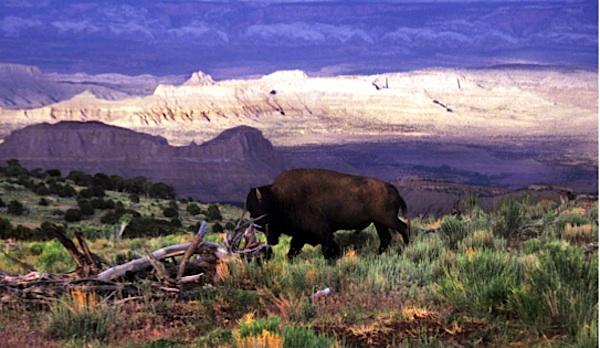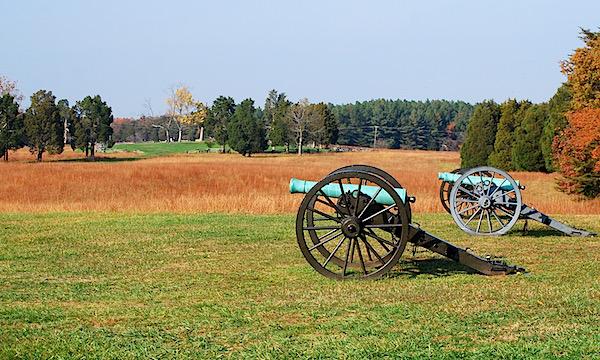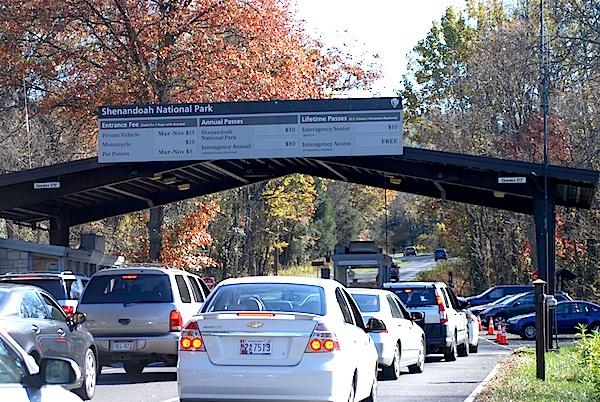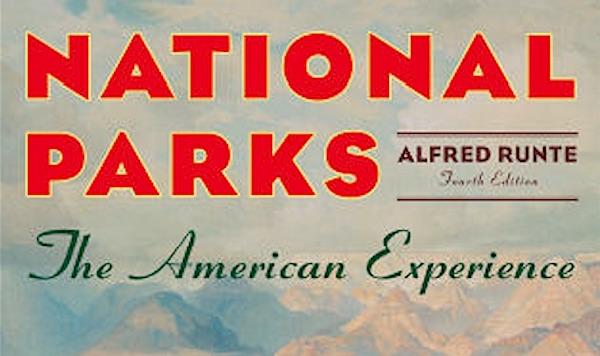
Heading into its centennial year, what must the National Park Service do to flourish?
Editor's note: Harry Butowsky spent more than three decades working for the National Park Service as an historian. He's worked for a handful of directors and seen much change in the agency. Understandably, he has an interesting perspective on the upcoming centennial of the National Park Service.
The National Park Service reminds me of a proud old ship sailing confidently across the North Atlantic. The captain is beaming and the passengers seem contented, at least, those traveling first class on the upper decks. It's below decks that the problems lurk. The crew is perhaps too easy going, believing the ship will always reach New York. However, the engines are old, the iron plating is thin, and the rivets are working loose. Granted, the Titanic is not a good analogy, since that ship was perfectly new. Otherwise, the analogy fits. The older things get'including institutions'the more they are in need of major repairs.
In the case of the National Park Service, the overhaul is long overdue. I spent my entire career in the History Division, which operates out of Washington, D.C. Some directors listened to the Division and others did not. Those that listened, I do believe, enjoyed smoother sailing in every division.
So, you will understand where I am coming from. I base my call for new backbone in the Park Service on good history. Only if the Park Service wants to tell a credible story can its centennial rise above mediocrity. My recommendations start with coming to grips with reality, and end with a call to historical arms.
This is my manual, if you will, for a great centennial, after which I invite you to offer your own. Just don't tell me that history is unimportant. In the Park Service, there is already enough of that myth going around.
Priority One: Address the Backlog
First, put this figure solidly in your mind'$11.5 billion. That's the backlog'the true funding shortage crippling all of our national parks. What is more, we can be sure that Congress is not likely to free up even a fraction of those needed funds. How can we be sure? Because the nation is $18 trillion in debt, with another $100 trillion in unfunded liabilities. At $4 trillion annually, the entire annual budget of the United States cannot possibly meet those backlogs. We have to address the Park Service backlog as part of that greater problem, or else nothing we suggest will make sense.
Instead, Park Service administrators have opted to act as if nothing is amiss. Committees have been formed; deals are being struck. It's as if the backlog did not exist.
Consider the blizzard of news releases announcing new directions for the agency. That's not an iceberg up ahead, folks. That's an opportunity to 'reach out.' Fine, but how will the reaching out be funded? If these new initiatives cannot be paid for, how can any of them be considered sincere?
Here's just one example: http://citiesspeak.org/2015/04/20/national-park-service-launches-nps-urban-agenda/ So it's an urban agenda now. But again, where is the funding? Urban, rural, or wilderness, how will these 'initiatives' be paid for? If the problem holding everything back is money, what good does it do to keep making promises that no one can possibly keep?
Priority Two: Make the Size of the National Park System Fit the Budget
Face it. There are just too many units in the National Park System for the money the Park Service has on hand. The country may want 407 units, but the agency cannot afford half that many. The proof again is all those news releases. That is what bureaucrats do when they lack solutions. They keep conjuring up new initiatives and programs, hoping that one will prove a 'hit.'
They hope then to take the 'hit' to Congress and ask for the money they don't have. Fine, but $11.5 billion? That will require more than an urban initiative, or a youth initiative, or a science initiative, or a deal with Budweiser. It will rather require convincing the United States Congress that 'eventually' will be too late. Preservation cannot run on 'eventually.' Those dollars are needed now.
Will the parks get those dollars? History says no. In Congress, waiting for money can turn into an eternity. Just ask Yellowstone in 1872. In 2016 and beyond, we need to face the reality of our current budgetary and staffing limitations. I say that means cutting parks.
What would be the magic number to cut? Actually, I would not cut a one. I would simply put those parks back where they belong'with the states, or even cities and counties, that should have been given the responsibility in the first place.
Before we do that, I hear some people screaming, we should raise the fees at the gate. That will work somewhat for the bigger parks, but not every park is as popular as Yellowstone or Grand Canyon. In the end, it still comes down to Congress and that $11.5 billion backlog. There is only so much money to go around.
Certainly, not every park needs to be a federal entity just because the states refuse to act. In the 1920s, the preservation of many desirable landscapes was confidently left to the states. To name just a few, look at the wonderful state-park systems in New York, Pennsylvania, Wisconsin, and California. Why is that not happening now? Because many states'and many environmentalists'think of the federal government as a bottomless pit. Just shake the money tree and write another news release. Park created and problem solved!

National battlefields and military parks such as Manassas (above) and Fredericksburg and Spotsylvania are prominent in the National Park System, but how many battlefields does the Park Service need?/Kurt Repanshek
Unfortunately, the problem only keeps worsening. How many battlefields do we need to interpret the Civil War, for example? There were 5,000 separate actions. Cannot some of the 'action' revert to the states? And parkways, How many of those do we need? While I personally use the George Washington Parkway, I am not convinced it needs to remain a national park.
Mount Vernon is not a national park. Does that in any way lessen its significance? Is not George Washington still a national figure? Then there is Steamtown, in Scranton, Pennsylvania. Sure, let's have a great park acknowledging railroad history, but why can't it managed by a state? Steamtown was blatantly intended to boost Scranton's local economy. Why should Uncle Sam be doing that?
And the urban parks. We all love open space. But why must the federal government be expected to fund them all?
Granted, it seems that government always has another pot of money. The problem is: It is always someone else's pot. No doubt, decommissioning just one aircraft carrier would fix the backlog, but that will never happen. American culture just doesn't work that way. That aircraft carrier employs people, too. We have to fix the number of parks within what Congress is willing to give the National Park Service, or Congress will not hear a word.
Priority Three: Establish Zero-Based Budgeting
Toward that end, the National Park Service needs to implement a zero-based budgeting system that will look at all of the regional and Washington, D.C., offices and programs. Does calling redundancy 'regional' make it right? Why can't every superintendent report to a leaner agency? But no, the staffing adjustments always come at the bottom, followed by a cry for more volunteers. Somewhere in that pile of news releases, I believe I saw that one. How can young people be expected take any 'initiative' on a salary of $10 a day? You want more 'minorities' to believe in the parks'and work in them? Then pay them an honest wage.
Priority Four: Put History Back in the Parks
None of this is of any surprise to historians. In various forms and guises, they have seen all of these problems before. This is to explain my pet peeve. It's actually misleading to create a 'historical' park. After all, every park comes with a history. Then let's see that visitors learn it, whether the park be Gettysburg or Yellowstone. The Park Service should start with every employee, including everyone working for the concessionaires. It's not just a job, folks. It's a calling. If you just want a job, McDonalds is hiring, and there should be plenty of openings at Burger King. In the parks, you work for generations yet unborn, and their legacy begins with your knowing that.
Start with your park's administrative history. You say your park doesn't have one? Then get an M.A. and write it as a thesis, or perhaps the dissertation for your Ph.D. Every park should have an up-to-date administrative history. How did we get this park? What is its mission? Where have we failed the public in the past? And believe me, we are always failing the public. That is what an administrative history is meant to correct for the future.
Nor should administrative histories be limited to individual parks. The system itself needs many such histories, broadly targeted to system issues. Can anyone doubt the importance of the role of concessionaires in park history? They have power. They have money. How does that influence the parks for good or ill? Where is the comprehensive history of the relationship between the National Park Service and the concessionaires? Here again, there is no such history, and some employee'with proper incentive from the agency'just might take the initiative to write it.
And fee policy. The last time the Service completed a history of that was in 1982. An update is long overdue. After all, fees now stay with the parks. Consider the 'backlog' again. Can it truly be erased just by changing the fee structure? We simply don't have enough history to guide us. We are still blindly looking forward without honestly looking back.

How far can higher fees go towards erasing the Park Service's maintenance backlog?/Kurt Repanshek
Nor does it end with fees and parks. Key documents such as the organizational charts and lists of all National Park Service Management personnel have not been updated since the late 1980s. See Organizational Structure of the National Park Service 1917 to 1985. Another key document, Historic Listing of National Park Service Officials.
And let us not forget the directors. At one time they were inclined to write useful and important books, or extensively shared their career findings with professional historians. The lessons a director learns are invaluable. The last to detail his experiences in a book was James Ridenour. The Service should commission a history of the management decisions and operational successes/failures of every director that ever served.
So, too, the National Park Service Thematic outline was last updated in 1987. Perhaps it is time for a new update. I am not referring to the 1994 thematic outline, but to the original thematic outline that dated back to 1929 when it was first conceived, History and Prehistory in the National Park System and the National Historic Landmarks Program.
If there is ever a commission charged with recommending the total number of parks which should be kept'and which should be transferred to state, local, or private authorities'this document will be needed. Better said, it will be essential.
Priority Five: An Educated Workforce
It is no wonder that rank-and-file members of the Park Service are drifting, too. An educated workforce is a confident workforce, but where are the materials supporting that education? Fortunately, there the future is somewhat brighter, thanks to historians from outside the agency. But again, employees must be given incentives to read their books.
Did I say books? You bet I did. Now that would be an 'initiative' capable of making a difference tomorrow morning'and without asking Congress for additional support.
Every employee needs to read those books. Of the six or seven books I would assign, one tops my list. That would be Alfred Runte's National Parks: The American Experience, the best book written on the national parks of all time. Think, then, of the thousands of employees in the Park Service who have never read it, including the current director of the National Park Service himself.
At least, if Director Jarvis has read it, he has never told me, or acted as if he did. A director who reads for effect would never be making the mistakes we see today. As one reviewer said of National Parks: The American Experience in an article for The Washington Post, 'At Interior, on Capitol Hill, and in the White House, National Parks is a must.'
A must does not mean a choice. Of course, some employees choose to read; my point is that all should made to read as a prerequisite for employment. My other titles would include:
1. The relevant administrative history'or its equivalent'of the employee's current park.
2. Alfred Runte, Yosemite: The Embattled Wilderness (Lincoln: University of Nebraska Press, 1990).
3. Lary M. Dilsaver, editor. America's National Park System: The Critical Documents. Lanham, MD: Rowman & Littlefield Publishers, 1997
4. Polly Welts Kaufman, National Parks and the Woman's Voice: A History. Albuquerque, NM: University of New Mexico Press, updated ed., 2006.
5. Horace M. Albright as told to Robert Cahn. The Birth of the National Park Service: The Founding Years, 1913-33. Salt Lake City: Howe Publications, 1985).
6. Richard West Sellars, Preserving Nature in the National Parks: A History New Haven: Yale University Press, 1997).
The Park Service should make it simple and provide these books on employment, with the appropriate 'testing' as each employee advances. A test? Yes again, a test. These are government jobs subject to Civil Service approval. And even the Director should not escape. The public deserves to know that the Service knows what it is managing. That backlog did not emerge just out of the blue.
Even without any ' new' history, we have a rich mother lode of information about our parks in both print and electronic format. This information represents the accumulated wealth and experience of generations of national park employees. I would like to see nothing better for 2016 than to make this heritage of information easily available to all. Much of it can be found now on the web but no one knows where to look or what to look for. Many capable and hardworking people are trying to correct the issue. Let us support them and get the job done.
Information that cannot be found is useless. So yes, add the National Parks Traveler to my list of must-have sources that every employee should know'and want'to follow.

The National Park Service needs to revive its commitment to history/Kurt Repanshek
Allow me to close by reminding everyone what a scholar does. In the National Park Service, we in the History Division kept our agency 'out of trouble' by keeping the director'and many others'fully informed. Our job was to make them 'look good' in the eyes of Congress, the president, and the public. I did that job with pride.
As proof of my comments above, look no further than what happened to the History e-library site after I retired. There has not been a single update in three years. Most of the existing links to online studies are broken and the site still claims 397 parks. Really, now?
The immense collection of National Park Service studies, reports, and information on this web site just collapsed due to lack of any support or attention. Why was a decade of taxpayer-supported effort not fully lost? Because, once I realized what was happening, I transferred all of the existing 3,500 studies to my personal web site and added a few thousand more. The material is still available, but not because the Park Service wanted it available. I did it as my personal contribution to history, and it didn't cost the taxpayers a dime.
You wonder why I get frustrated'and even angry? Because that is not how government'your National Park Service and mine'is supposed to work. The History Division is not some localized group of history buffs. Sure, we all get behind, but three years and a busted website? Now what? More things like 'Washington Slept Here?' History is what Washington and the country did. The National Park Service is America's face to the world, and all the History Division is allowed to do now is put lipstick on another news release.
How could anyone possibly blow the history of the National Park Service during its centennial, of all things? A good question, and here is how they are blowing it. Upper management has thrown history in the trashcan and still expects the nation to be inspired. Trading on the prestige of the agency, they then expect the public to go along.
In the past, that would not have happened. Even the crippling backlog, if not entirely erased, would certainly have been addressed. Nor would the cost-savings have come at the price of history. Here again, anyone can trot out the Organization of American Historians and say that the profession 'approves.' Well, the professional historians that matter do not approve, and I have talked to every one of them.
History is not a toy. The national parks deserve our very best, both in terms of management and professional history. Now, start making friends with the history of your favorite park. And do urge its managers to do the same.




Comments
Travis - thank you for taking the time to provide solid responses to this incredibly weak article and incoherent stream of comments.
"I say that means cutting parks." followed by "I would not cut a one". Huh? "simply put those parks back where they belong". Really.....it's just that simple....the states have so much money I am sure they will be lined up to take this one on. The use of the term "environmentalists" here.....c'mon lose the 60's baggage. Not all "environmentalists" agree on everything you know. Quite a few don't even like parks anyway, for a number of reasons (some of them valid).
Look folks, this is a complex problem. Some points in the article are worthy and should be considered. But it is exceptionally far from complete or accurate. No one has a clear path here so everyone needs to settle down. There is nothing "PC" in Travis's comments. Again....so much baggage; so much anger.
Harry - thank you for bringing some worthy points to the NP management discussion. Your article is horrible overall, but I do appreciate some of your points. I can agree there MAY be some parks that should be cut from the system, but that had better be handled carefully and any sweeping measure to cut 50% is a terrible idea in my opinion. I do like the idea of an educated workforce, but then I like education. Not everybody else does though, and I think Travis makes a worthy argument to your sweeping reform. I would certainly like to see more rangers that know their parks better. Overall, some ok thoughts. Not exactly a scholarly approach though. :-)
During my career in the Maintenance Division, I would say about a third of the work we did was not maintenance, but new construction and elaborate upgrades. This development work was always a higher priority and the most certain path to managerial promotion. This practice had a double effect on the maintenance backlog, first by diverting staff from existing maintenance, and secondly, by adding to the overall long-term maintenance load.
That's a good question, ec. I believe the national backlog is real, but that it is well-padded with development (look for the buzz word 'enhance') masquarading as maintenance. Given the pitiful lack of NPS fiscal transparency, my best guess is probably about 50-50 for the modern list.
What bureaucrat ever thinks they have enough money? Here at Mount Rainier, there have been at least $200 million in infrastructure improvements over the past decade and the staff has expanded from 125 FTE to 172 FTE during the past three years, but the tired old press releases claiming poverty and insufficent staff just keep coming.
To sum up so far:
If the Park Service saves money, Congress will just reduce the budget again. A+ fpr that insight. That's exactly what Congress will do. Then will we let them?
Leadership is the problem, and always has been. Again, A+ for that insight. Or would you rather I make the point by drinking 10 Buds? Come to think of it, that is a marvelous idea. On a scale of one to 10 Buds, how are we doing so far? One Bud--awful. 10 Buds--exceptional!
The national parks are losing their relevance. Sorry, that's just one Bud. It's convenient doublespeak to mask the greater problem that the whole country is losing economic stability. Here in Seattle, a half dozen recent college graduates I know have student loans beginning at $40,000. The highest (undergraduate and M.A.) just told me hers totalled $150,000. Those $1,000 payments every month really inspire you to visit your national parks.
The Park Service always seems to have money for the bureaucracy it wants. Yes, 10 Buds! And it's especially true of universities these days. Professors? What are those?
Harry wrote a horrible article. 0 Buds, and a dunce cap in the corner. Oh, that's so un-PC! Everyone gets a Bud for trying! No, Scott gets a dunce cap for daring to suggest that a great piece of writing is anything but. I may disagree with Harry's conclusions, too, but I know sweat when I see it. So yes, I will now treat myself to 10 Buds, and sign off for the rest of the day!
Perhaps we should see about creating a National Parks Lend - Lease Act. We can loan Yellowstone, Yosemite, Glacier and Grand Canyon to their respective states or counties or other interested organizations and let them manage them. Over a course of say 20 years, the NPS can evaluate what's left of them and decide if they want them back since they apparently have the resources to manage these four sites. In the meantine, the funding and staff currently allocated to these parks can be redistributed to the remaining 403 NPS sites to help out the "real" parks.
Nice post Harry, and it has led to an interesting discussion. I do not have the answers. When I first started working in Yosemite on a trail crew in 1960, park visitation was roughly 500,000. Upon my retirement in 1997, it was in excess of 4 million, all rough figures. In 1960, visitation to Tuolumne Meadows via the old Tioga Road was 25,000. Now it exceeds a million and half. The NPS has a really tough job not only keeping up with the facilities and maintenance of said, but constructing the additional infrastructure to handle this almost 8 fold increase in visitation at Yosemite. One approach is to encourage the development of new infrastructure outside the parks, but then the issue of day use access becomes contentious. Railroads, mono rails, shuttle trams have issues also. As Mr. Runte points out, population increase places demands on park infrastructure needs that persons in my age group see changing the parks as we knew them so many years ago. Many propose visitor use capacities, etc. to limit the visitation and the need for more development. This is a very tough sell politically and is currently unacceptable to many citizens.
I don not know Harry, but I think the reality is that after the best history, science, public input is gathered and reviewed, the manager then must take into account the political realities existing at the time. That is out system. Hopefully, as has been pointed out, the constituency for our parks and public lands will continue to grow, changing the political equation to some extent. Tahoma, you make a good point, I have seen it myself. We do like to build things but much of the pressure to do so is an effort to meet the increasing demand. I could go on and on,, but had better stop here. I have found this topic quite interesting
OK JEMiculka lets cut the sarcasm. We need some positive suggestions here. Do you have one? If so I would like to hear it. You do not like what I have to say then tell me what you think would be a better solution. The future of our great system of National Parks is at stake so give me some ideas to work with that will be positive. We are waiting to hear from you.
Thank you for your thoughtful reply rmackie. I agree with what you have to say and you have given us all material to consider.
The park service now has an "Office of Relevancy, Diversity and Inclusion." It is busy issuing memos, training and goals for, well, relevancy. I'm not sure what relevancy is. Probably something like relevance but squishier. As in "No, it's not actually relevant, but it has the aroma of relevancy."
Inclusion and diversity are, of course, redundant. If an organization were inclusive the results would be diverse and vice versa. But never mind.
The Office of Relevancy. Does this imply that the park service can not identify its relevancy? Or do recalcitrant taxpayers need convincing of its relevancy?
Does Apple have an office of relevancy? FedEx? Disney? I suspect not. They spend their money efficiently making products people want.
What other government agencies have an Office of Relevancy? Immigration? Nuclear Regulatory Commission?
I am not convinced that an organization that reduces it's customer service staff from 75 to 16 while larding headquarters with relevancy czars needs more money.